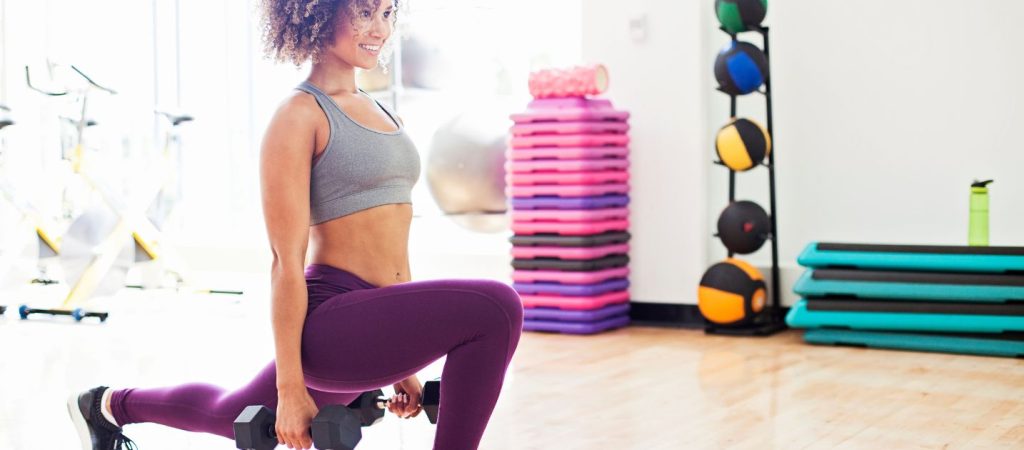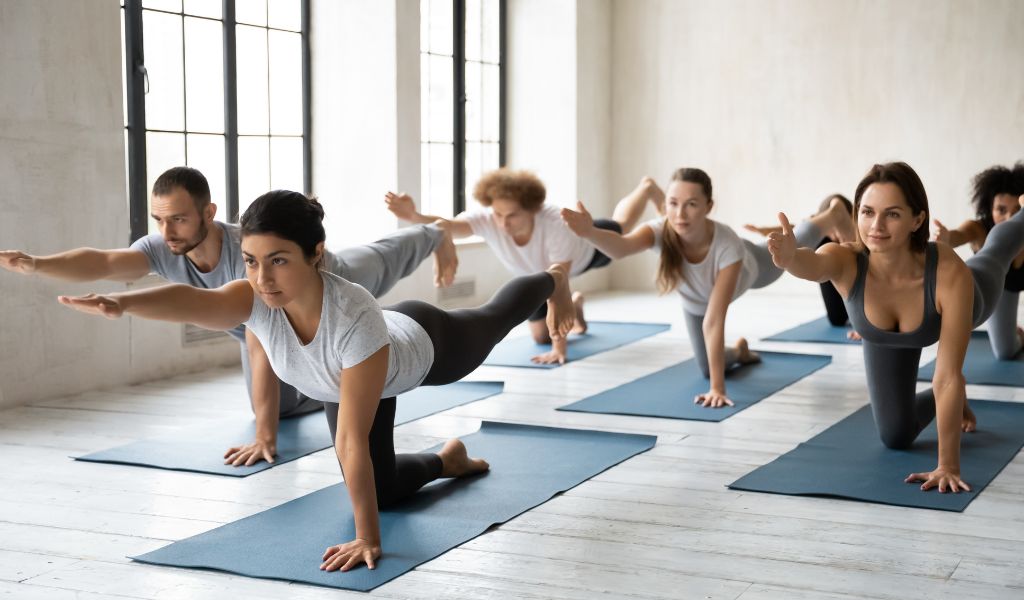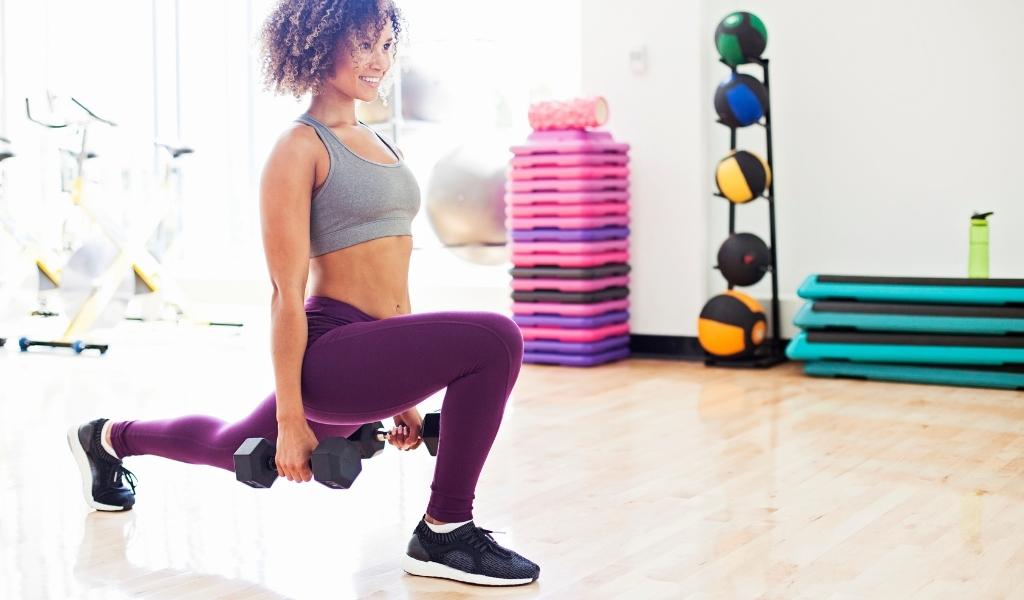No products in the cart.
9 Best Dumbell Exercises for Legs

Take Care Of Your Body Now & You Will Thank Yourself Later
As we age, we are more prone to injuries that result from accidental falls. In fact, according to the Centers for Disease Control and Prevention (CDC) twenty-five percent of older adults, aged sixty-five and up, fall each year. That is one in every four people falling their way into a hospital stay, life changing injury, or worse. The best way to mitigate the risk of accidental falls is to have better body mechanics and spatial awareness. Exercise is an excellent way to create fluid movement patterns and grow muscle to support and protect the body whilst reducing the chance of a potentially fatal fall occurring. Specifically, balance and strength training the legs from your youth up to and continuing through adulthood can seriously help a fall from happening. In this article, we will be discussing the 9 best dumbell exercises for legs along with various exercises you can do to help keep you on your feet. The best part of it all? You only need two dumbbells to achieve a workout that your future self will thank you for.
Warm Up Movements:
Before diving right into our key exercises, it is important to remember to always properly warm up the body. Prior to getting into the more complex and difficult movements, start off with five to ten minutes of any cardiovascular work that will get the heart rate up. Then, continue on to these simple movements to send awareness and blood flow to the legs and core.
1. Standing hip CARs (controlled articulate rotations)
Begin this movement by supporting one side of your body in a doorway, alongside a rack as seen in the photo above, or on any fixed surface you can hold on to.
Bracing the core, lift the opposite leg up to 90 degrees and start with your foot angled across the fixed, standing leg. From this point, rotate the hip out to create a half circle. Then, bring your knee in so your heel faces the wall behind you, and slowly finish the second half of your hip circle and return to the original position.
2. Seated hip openers
This mobility exercise starts with the individual seated on the ground with their legs bent and feet placed hip width apart. With the hands on the floor behind the back, slowly lower the knees to one side. It is okay if the knees do not completely touch the floor, as with practice it will eventually come naturally!
3. Bird dogs

A great exercise to include in any warm up, the bird dog fires up the core, back, glutes, and more to get the body ready for a workout. Start on all fours with the knees below the hips and the hands placed directly below the shoulders.
Press away from the floor to fill out the shoulder blades. From here you are going to raise the opposite arm and leg at the same time. Reach out in front with the left arm, while also trying to point the toes on the wall behind you with your right leg. After a breath, return the limbs to the ground and repeat the same movement but now with right arm and left leg. Be sure to maintain a straight line from hand to heel during this one.
4. Wall bridge
This next one is a sure fire way to light up the hamstrings, calves, glutes, and core before a big workout. Taking the general concept of a regular glute bridge done on the floor, this movement requires the individual to place their feet on the wall in front of them. Making a ninety degree angle with the knees, begin this movement by bracing the core and tucking the pelvis first. Then, engage the glutes and lift the hips up off the floor. After a brief moment, slowly lower the legs back down. To crank up the intensity here, at the top of this movement when the glutes are in the air, flex the calves and pull the heels off the wall .
5. Dead bugs
The dead bug mimics the exact same movement as a bird dog, however this time the athlete is lying on the ground. Be sure to anchor the belly to the floor and start with your feet in the air and knees bent to ninety degrees with the arms stretched out above you. From here, you are going to extend one leg out, without touching the heel to the ground, while also sending the opposite hand to reach up behind the head. Exhale and return the hand to be in line with the ceiling and raise the knee up again to meet the other. Repeat with the other leg and arm. Add a medicine ball between the knees to really work the core and make this exercise a bit more difficult. To lower the intensity, simply keep the knees bent and tap the heel to the floor, versus fulling extending the leg.
These are just a few examples of some very basic movements to complete during your warm up. Feel free to incorporate different exercises for your next workout, or try some of the ones listed above. Properly preparing the body for exercise can actually help reduce the risk of an injury or accident occurring while lifting. Let us take a deeper look into more leg exercises you can do with just a pair of dumbbells and your body.
Main Exercises:
Now that the muscles are all prepped and ready to go, it is time to get into some of the best dumbbell exercises for your legs. Make sure to practice proper form before loading on weight, and to always be cautious and have a spotter nearby if needed. Listed in no particular order, here are a few great options to include during your next leg day:
1. Deadlift

A classic addition to many training programs, the deadlift can help to seriously bulk up the posterior chain (back side) of the body. That includes your back, as well as your glutes, hamstrings, calves, etc… This exercise begins with the individual standing tall with the feet shoulder width apart. Place a dumbbell next to each foot on the outer side of the body. Gazing straight ahead with your arms at your side, slowly lower the hips down while keeping a neutral spine. Then, pick up the dumbbells and stand straight up, being sure not to excessively squeeze the glutes and push the hips forward. Lower the weight back down and repeat the process.
2. Squat
Another traditional compound lift that is almost always included in any type of program, the squat offers a multitude of benefits. While the movement works nearly every part of the body, this exercise is especially great for growing the quadriceps, glutes, hamstrings, core. The way a squat actually looks can vary person to person depending on hip width, femur and torso length, and other factors. To perform a regular squat, begin by standing up tall with your feet about shoulder to hip width apart.
Hold a pair of dumbbells to rest on the shoulders, then begin to descend as if you were going to sit in a chair.
Keep the core tight and sink back into the heels until you reach about a ninety degree angle at the knee joint. Play around with the placement of the feet until a comfortable position is found and you have the squat form that works best for you. To add a little fire and really engage the quadriceps, perform a squat with your heels elevated off the ground. Use a plate, foam wedge, or even the bottom of a dumbbell to elevate each of the heels, and then go down into the squat as normal. You may find it possible to go a bit deeper in your squat with this variation; just be sure to protect the joints by not allowing the knees to cross too far over the toes.
3. Romanian deadlift
The romanian deadlift or “RDL” for short is an extremely effective, hamstring and glute focused leg exercise. While the formation varies from a regular deadlift, this exercise can provide nearly the same amount of biological benefits. Stand straight up with your feet about shoulder width apart and hold a dumbbell in each hand. From here, start by hinging your body at the hips and sending the glutes straight back as if to touch the wall behind you. Keep going until you feel a slight stretch in the hamstrings and the dumbbells reach just below or around your knees. Then, pulling yourself up through the midfoot, return to the standing position. If the mind to muscle connection is lacking, try to think about tearing the floor apart with the soles of your feet. It is also important to protect the neck by keeping it in line with the rest of the body, not straining it upwards. Once you’ve got the basic form down pat, try challenging your balance, core, and glute strength by doing sets of single leg RDLs.
4. Good morning
A very similar movement pattern to the RDL, good mornings will wake up those glutes, hamstrings, and lower backs. Begin in the same starting position as a romanian deadlift, except hold the weights so they rest on the tops of the shoulder. Then, fold yourself over at the hip crease and push the glutes out until you feel a stretch in the hamstrings. Pull yourself back up to fully standing through the heels and repeat. This movement is also a great one to include during a warm up; just swap the dumbbells for a light resistance band or no equipment at all to practice this hip-hinging sequence.
5. Glute bridge

Continuing with our hip dominant movements, the dumbbell glute bridge is a guaranteed way to grow the glutes, specifically, while also working the rest of the posterior chain. Start by lying on your back with the knees bent so the heels are directly in front of the glutes. Hold a dumbbell right below your belly button so it rests on your pelvis. Before lifting the butt up off the floor, start by engaging the lower abdominals by tucking the pelvis in. Then, exhale and squeeze the glutes. Raise them up by pressing the feet into the floor, hold at the top for a second, and slowly lower the legs back down to the ground.
6. Hamstring walk out
Mimicking a glute bridge with a few extra steps (literally) is the glute bridge hamstring walkout. Lie on your back and hold a dumbbell with your arms stretched overhead. From this position, perform a glute bridge. Once you are at the top of this movement, walk each foot out one step further, one at a time. Keep walking the feet out as far as you can, and then walk them back so the heels meet the glutes. Lower the hips down to the floor and repeat. Be mindful about maintaining a straight line from head to hip.
7. Lunges

No leg day would be complete without some lunges. Holding a dumbbell in each hand, stand straight up and then take a big step back with just one foot. From here, lower the back knee down until it is just hovering a few inches above the floor. Then, stand up to your original position using the front foot. To work the abductor and adductor muscle of the legs, perform side to side lunges. Instead of taking a big step backwards for a lunge, take one big step to the side and lean into that leg until you feel a stretch in the middle of your thighs. Then,use the other leg to pull yourself back up to standing and repeat on the other side.
8. Rear foot elevated split squat
Piggybacking off the lunge formation is a rear foot elevated split squat. For this one, however, you want to place the back foot on a bench, box, or any other elevated surface so it is resting on it. You will feel the majority of this movement in your standing leg. Hold onto a dumbbell in each hand, and slowly descend until you have bent the standing leg into a ninety degree angle. Just like the lunge, you are going to push the floor down through that front foot until you have returned to standing.
Perform a number of repetitions on one leg, and then complete the same amount on the other. Pro tip: place your dumbbells down where your standing foot is after each set so you don’t lose the proper foot placement during your workout.
9. Knees to squat
This is one exercise that is almost foolproof; all you have to do is just as the name says. Start on the floor, sitting up right on both knees placed directly below the hips. Hold a dumbbell at your chest, and remove one foot out from underneath you, plant it on the ground, and slowly rise up until you can plant the other. Keep extending the knees until you are in a squat position, and then return to the knees to the floor. Remember to switch which leg you are choosing to initially “stand up” with each time so you are properly loading each side.
Be sure to take the necessary time to cool down and stretch the body once you finish your workout. When you’re ready, simply play around with your set and repetition ranges to continue challenging your muscles. You can also really encourage strength gains by lengthening the eccentric or “return” phase of a movement. For example, try a three second count on your way down during a squat or throw in a pause at the bottom range of the exercise. A simple home workout today is all you need to effectively care for the health and safety of your future self and prevent potential falls.
References:
Centers for Disease Control and Prevention. (2020, December 16). Keep on your feet-preventing older Adult Falls. Centers for Disease Control and Prevention. Retrieved June 6, 2022, from
https://www.cdc.gov/injury/features/older-adult-falls/index.html#:~:text=One%20out%20of %20four%20older,particularly%20among%20the%20aging%20population.&text=About%2 036%20million%20falls%20are,in%20more%20than%2032%2C000%20deaths
